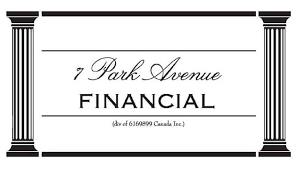|
Mastering Cash Flow: AR Factoring Simplified
The Ultimate Guide to Accounts Receivable Loans
You Are Looking for Commercial AR Factoring and Financing!
Revolutionize Your Finances with Accounts Receivable Loans
You've arrived at the right address! Welcome to 7 Park Avenue Financial
Financing and cash flow are the biggest issues facing businesses today
Unaware / Dissatisfied with your financing options?
Call Now! - Direct Line - 416 319 5769 - Let's talk or arrange a meeting to discuss your needs
Email - sprokop@7parkavenuefinancial.com

Explore this article because it offers a clear roadmap to leveraging AR Factoring, enhancing your business's liquidity and growth
Navigating Cash Challenges with AR Factoring
Introduction to Commercial AR Factoring
Mind your own business! That's what a Canadian business owner or financial manager would prefer to do when they are considering accounts receivable financing, aka a commercial ar factoring loan.
AR is of course accounts receivable, your second most liquid asset next to cash. Oh, and by the way, the good news is it’s not a loan, per se, more about that later. Unfortunately, current practices don’t allow you to ‘mind that business'.
AR Factoring and Accounts Receivable Loans are revolutionizing business cash flow, offering unparalleled flexibility and speed in managing a company's finances
Exploring Factoring and Its Advantages
So is there a way your company can obtain all the advantages of factoring receivables, receive a competitive financing rate, and at the same time implement what is in effect a confidential invoice discounting program? There is. First, let’s cover some basics.
The Need for Factoring in Growing Businesses
You know the drill already. Your client base and investment in accounts receivable is taking up a huge part of your working capital. Sales are growing, or you have some major new contracts and business, forcing your working capital to go up. Enter the receivables factoring solution!
Strategy Implementation: Embracing Factoring
The strategy. It's of course what thousands of businesses in Canada are starting to consider every day - factoring. (Also called commercial invoice discounting). If you were going to implement this strategy in the manner that your competitors currently are then you would sell your receivables as you generate them, obtaining immediate cash flow to generate more sales, more profit, and of course cover all those operating costs you need to run your business on a daily basis.
The Traditional AR Factoring Model and Its Limitations
But wait a minute. As commercial invoice factoring/ar factoring and AR financing stand now in Canada, utilizing the U.S. and European models, your clients must be notified that you have sold that receivable to the finance firm by the accounts receivable factoring company via the traditional factoring process - that's called ' notification factoring' where the customer pays the factor firm.
Let’s examine what just happened as you have implemented this program. You have a bankable, liquid asset, your receivable portfolio. You now have the ability to in effect 'monetize' that investment into working capital and cash flow today. Companies choosing non recourse factoring can also transfer credit risk to the factor when the factor company assumes risk.
Discussing the Costs of Factoring
The costs of factoring are always a concern or subject of discussion when we talk to clients. The cost is in the 1-2% range per month from your financing company. However, companies such as yours need to understand that you can often cut those factoring fees in half by effectively using your new cash to generate immediate sales and profits, take advantage of supplier discounts, and purchase more effectively and 'smarter' from valued key suppliers.
AR Factoring as a Catalyst for Innovation in Canadian SMEs
Unlike traditional loans, AR factoring can be a unique driver for innovation among small and medium-sized enterprises (SMEs) in Canada.
By providing immediate cash flow via selling unpaid invoices, businesses are not just solving liquidity issues but can also channel these funds into research and development.
This financial flexibility allows SMEs to invest in innovative projects or technology upgrades, which might have been out of reach due to tight cash flows. Thus, AR factoring for accounts receivables, often seen merely as a financial tool, can unexpectedly become a catalyst for fostering innovation within the Canadian business landscape.
Key Takeaways
Accounts Receivable (AR) Factoring involves a business selling its invoices at a discount to a third party, called a factor, to receive immediate cash before the customer pays. This financial solution primarily aims at improving cash flow and reducing the waiting period for payments from customers.
Process of Factoring: When a company chooses factoring, it sells its outstanding invoices to a factor. The factor then advances a significant percentage of the invoice value - this process can also assist a company in manual accounts receivable processes - Many factoring companies have strong automated systems and software for transaction processing
Risk Assessment: A key element in AR factoring is the risk analysis conducted by the factor. They assess the creditworthiness of the business's customers, not the business itself. This aspect significantly influences the factoring agreement's terms, including the advance rate and fees.
Advance Rates and Fees: To calculate AR factoring cost it is important to understand the following: The advance rate, usually a percentage of the total invoice value, is what the factor initially pays the business. Factoring company advances are higher than bank margins on receivables. Understanding these rates, along with the associated fees (which can vary based on the factor's risk assessment), is essential for evaluating the cost-effectiveness of this financing option. Fees are not expressed as an interest rate per se
Confidentiality in Factoring: Some arrangements offer confidential factoring, where customers are unaware of the business's engagement with a factor. This approach helps maintain normal customer relations while still providing the benefits of factoring.
Accounts Receivable Loans Difference: In contrast to factoring, accounts receivable loans involve using receivables as collateral for a loan. The business retains control over its receivables and continues to collect payments from customers, making it a less intrusive form of financing.
Conclusion: The Power of Confidential a/r Financing in Business Finance
Let’s recap - the strategy = generate cash! The tactic - C I D - Confidential invoice discounting.
Is there a way to avoid that somewhat 'sticky' process and embrace the theme of our shared information here, which is 'minding your own business'?
There is. The secret we are sharing is the availability of 'C I D' which stands for confidential invoice discounting. This is clearly the accounts receivable financing of preference for Canadian businesses.
Do you qualify? We are pretty sure you do, so why not speak to 7 Park Avenue Financial, a trusted, credible and experienced Canadian business financing advisor on this valuable working capital concept?
FAQ
What is accounts receivable factoring?
Accounts receivable factoring involves selling your unpaid invoices to a third party for a factoring fee, for immediate cash, enhancing your business's liquidity. Factoring receivables involves a factoring company buying your unpaid invoices and paying you an advance rate, typically 75% to 100% of the invoice value minus fees.
Clients usually pay their invoices through the factoring company, which may indicate your business's cash-flow issues. The factoring company deducts its fee before paying you the remainder. Fees, ranging from 1% to 1.5%, are charged until invoices are paid, based on the invoice's face value or the advance amount.
There are two types: recourse and non-recourse factoring. In recourse factoring, you're liable if clients don't pay, often requiring a personal guarantee but usually offering lower fees and higher advances. Non-recourse factoring, where the factoring company assumes more risk, generally has higher rates and lower advance rates.
How does an accounts receivable loan work?
It's a loan where your outstanding invoices serve as collateral, providing you with essential funds while you wait for customer payments.
What are the primary benefits of AR factoring?
AR factoring offers quick access to cash, improves cash flow, and reduces the burden of chasing payments, allowing you to focus on growth.
Is AR factoring suitable for all businesses?
It's particularly beneficial for businesses needing quick cash or those with long payment cycles, but it's important to assess its suitability based on your specific financial situation when considering factoring receivables.
Are there risks involved with AR factoring?
While it provides immediate cash, it can be costly, and you lose a portion of your invoice value. Also, your customers' creditworthiness becomes crucial in a solution via factoring companies - Most factoring is recourse factoring, so companies still assume normal collection and bad debt risk
Does AR factoring affect my business credit score?
AR factoring via the factoring company typically doesn't impact your credit score directly, as it's not a loan but the sale of assets (invoices) as opposed to a line of credit.
Can startups use AR factoring or loans?
Yes, startups can benefit from these financial tools, especially if they have solid invoices but limited credit history.
What's the typical timeframe for receiving funds in AR factoring?
Funds via the cash advance of the value of the invoice advance factoring agreement are usually received within 24-48 hours after the factor verifies the invoices, making it a quick financing option.
Are personal guarantees required for AR factoring?
Personal guarantees depend on the factoring company's policies; some may require them, while others may not.
How do I choose between AR factoring and an AR loan?
The decision should be based on your business's specific needs, such as the desire for control over collections and the cost implications of each option when considering how accounts receivable factoring works.

' Canadian Business Financing With The Intelligent Use Of Experience '
STAN PROKOP
7 Park Avenue Financial/Copyright/2024

Stan Prokop is the founder of 7 Park Avenue Financial and a recognized expert on Canadian Business Financing. Since 2004 Stan has helped hundreds of small, medium and large organizations achieve the financing they need to survive and grow. He has decades of credit and lending experience working for firms such as Hewlett Packard / Cable & Wireless / Ashland Oil
|